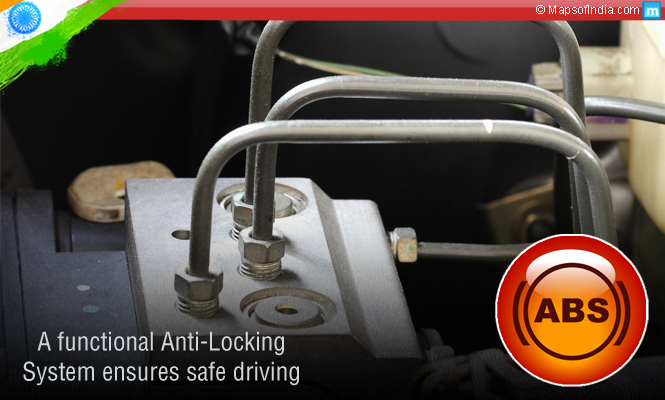Over the last decade, automobile manufacturers from around the world have made extensive efforts individually and collectively to make driving safer. Almost all global players have ensured the provision of anti-lock braking system (ABS) in most of their regular selling models. ABS is much more reliable and needs less repair and maintenance than the previous braking systems. ABS allows for extensive control on the vehicle in question, when it has been placed in a situation demanding abrupt stopping. It is hence, quite important to ensure regular check-ups on the braking system, and their components. This allows for better and safer driving and prevention of larger issues from coming up in the future.
Just as the name says, ABS prevents the wheels from locking up and allows the driver better control of the vehicle in some of the toughest driving conditions. The system employs a much stronger hydraulic setup than the older braking mechanisms, an anti-lock brake control module and sensors located both in the front and rear wheels. When a wheel is about to lock up, the sensors transmit a signal to the control module which cuts off the brake fluid being sent to that particular wheel. This assures the rotating of all wheels at the same speed and prevents vehicles from losing control or spinning out.
Malfunction with brakes fitted with ABS
To ensure the proper working of ABS in a vehicle is one of the most important things in its maintenance and safety requirements. There are plenty of telltales of problems or malfunction with brakes fitted with ABS. A common way to realize the issue is the emitting of a loud squeaking noise everytime one applies pressure onto the brake pedal. Other noises include crunching or grinding upon performing the same action. The most easily notable is the increase in the stopping distance from normal. Upon detection of any of the issues, the vehicle needs to undergo checkup and repair as soon as possible and permissible.
Of the several components of the average ABS, even if one fails to function properly, the entire setup and its operation is put at risk. One of the most common problems faced by people with ABS in their vehicles is dirt and dust buildup on the sensors located near the wheels. This causes a report to be sent to the onboard computer regarding the malfunction and need for repair/replacement. This is, however, one of the most easily fixed issues in question. Other important determining factors that judge the performance of the braking system are, condition of the brake pads, age of the brake fluid, and presence of any cracks or breaks whatsoever in the brake line. This could later turn into a very serious problem if not dealt with in time, and cause the entire system to perform poorly and even damage the braking system.
Brake is the most important safety feature
The average line of thought projects ABS braking systems to function only in wet, snowy and slippery conditions and that is untrue. ABS works under all circumstances and ambient conditions. It has been designed to kick in anytime of the day that a wheel refuses to get in sync with the rest. This can occur in bad and unfavourable weather, although ABS can be very easily relied upon, on dry roads too. The primary goal, however, remains the best control of the vehicle in all weather conditions.
ABS brake system can be fixed and that too without having to consult a mechanic, but understanding of the complete brake setup helps one tinker with the parts and figure out where the issue lies. There’s plenty of components to go through and make sure they’re all working fine and without the urgent need of attention and care. The brakes can also malfunction because of some glitch in the computer module and ABS sensors. Most of these ventures require a computer to be hooked to the inside of a car. Even with the electrical features around these systems, everything is quite similar to the older brake systems.
ABS braking systems have been a serious upgrade in the cars’ safety and control paradigm. Their built-in controls also help prevent the brakes from seizing up and that makes them safer and better than the older systems. At the end of the day, brakes are the most important safety feature in our vehicles and a constant check on maintenance is necessary.




